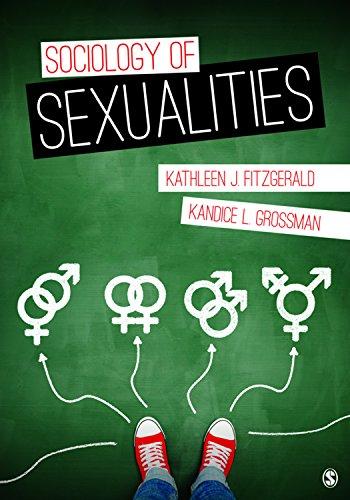Preface to the Second Edition
Within American society, mental disorder is commonly understood as an attribute of the individual. This intuitive understanding reflects the experiential reality that it is individuals who are beset by feelings of fear and despair, confused by intrusive or jumbled thoughts, addicted to drugs, and so forth. In this regard, everyday thinking is consistent with contemporary psychiatry, which also individualizes pathology, increasingly in biological terms.
The contributors to this handbook collectively articulate an alternative vision, one in which the individual experience of psychopathology is inextricably embedded within its social context. This theme—the interface between society and the inward experience of its members—is developed in an encompassing manner throughout this volume. Although this perspective may seem self-evident, especially in a handbook on the sociology of mental health, the widespread adoption of a medical model of aberrant states, especially by sociologists, we submit, has obscured the relevance of social organization and processes. In fact, since the first edition of this handbook, the medical model has become even more dominant. This change is reflected in public beliefs about the causes of mental disorders, which have shifted significantly toward biological and genetic attributions over the past decade.
The dominance of the medical model is tackled at its most fundamental level by several authors who question our basic understanding of mental illness as illness. One aspect of this critique points to the historical and cultural specificity of the medical model, thereby calling attention to its socially constructed nature. Some question the often tacit assumption that mental disorders exist as objective states that can legitimately be assessed with universal and standardized criteria, especially with regard to comparisons among culturally disparate groups. Several authors also call attention to the impact of social, economic, cultural, and political forces on our science, including the methods we use, how we interpret data, and the conclusions we draw about the mental health impact of these very same forces. Throughout this volume, then, the authors confront the dilemma that even the manner in which we think about mental disorder is shaped by the nature of the society in which we live and conduct our research.
Most of this handbook is devoted to the explanation of one elementary observation: Disorder is not uniformly distributed throughout society but occurs more densely within some social strata than others, especially among those with the fewest social and economic resources. The explanation of such mental health disparities has engaged the attention of sociologists since the earliest community-based surveys revealed an inverse association between disorder and socioeconomic status. It continues to do so.
The most influential idea running through this body of work—the idea that connects work on gender, socioeconomic status, race, ethnicity, age, and poverty—is that social group differences in disorder are linked to corresponding differences in exposure to the social conditions that cause disorder and in responses to those conditions. This idea does not dispute the etiological significance of biological factors
x
Preface to the Second Edition
but sets these influences to the side, held in reserve to account for individual (as distinct from group) differences. The explanation of group differences in disorder necessarily entails casual agents whose own occurrence also depends (at least in part) on group membership. Social factors best fit this criterion.
This one idea is essential to understanding the distinctive vision that sociologists bring to the study of mental health. From a clinical perspective, disorder is abnormal and its origins lie in anomalous experiences or attributes (an admittedly overly simplistic account). For the sociologist, in contrast, the occurrence of abnormality is a normal by-product of the routine functioning of society. In other words, the social arrangements and processes that serve the interest of some segments of society inevitably harm others. The sources of systematic differences in disorder, then, lie not in the bizarre or happenstance but in the repetition and reproduction of the commonplace. Thus, it is not surprising that social stratification and inequality are prominent themes in this handbook.
The influence of social forces, however, is perhaps most evident in the aftermath of the onset of mental, emotional, or behavioral problems. Here, we see that individuals with essentially the same disorder often follow divergent sequences of societal response, which determine (at least in part) the course of the disorder—its duration, the likelihood of recovery, and the chances of relapse or recurrence. One dimension of the societal response is the definition of the problem in medical terms and associated processes of help seeking and treatment, as well as the institutional contexts within which these processes unfold. The potentially therapeutic effects of treatment tend to be counterbalanced at least to some extent by negative societal responses, such as stigma, including the responses of individuals (family, friends, coworkers, acquaintances, and complete strangers) and institutions (e.g., those providing employment, housing, and health care and those making policy about the rights and regulation of persons with mental illness). Overlapping the issue of stigma are responses of the criminal and civil justice systems, which can have a major impact on the lives of persons identified as having mental illness. And perhaps the most social aspect of mental illness concerns its impact on others, especially the family.
The course of a particular disorder over time displays considerable variation at the individual level. Response to treatment, including reactions to powerful pharmaceutical agents, is often defined in biological or intrapsychic terms. However, there are pronounced group differences in the course and consequences of mental illness as well, differences that once again point to the equally powerful influence of the social factors that differentiate one group from another. The impact of gender, race, ethnicity, age, and socioeconomic status are apparent at virtually every juncture, pointing once again to the significance of systems of stratification and inequality.
These perspectives have characterized the sociological study of mental illness for nearly a half century. In this sense, this handbook can be viewed as a historical record of the emergence of the field and its current state, a description of a work in progress. It presents the state of the art in theory, method, research, and interpretation. Its authors, however, have gone one step further, offering their vision of what lies on the horizon or just beyond it, presenting a sociological agenda for the future. This agenda, we submit, is to reconnect the experience of psychopathology among individuals to its social origins and consequences.
It is our immodest hope, too, that this handbook will foster a reintegration of the sociological study of mental health. Just as the discipline has become increasingly specialized, so too has the subdiscipline. As Toffler (1984) notes, one of the most highly developed skills in contemporary Western civilization is dissection—the splitting up of problems into their smallest possible components—a skill perhaps most finely honed in science. Yet in editing this handbook, we have seen the same themes emerge repeatedly in somewhat different guises. Our initial pleasure at what seemed like a fortuitous outcome has given way to the realization that this outcome was inevitable because its authors have all been describing one and the same thing: the social experience of mental illness. The many stages and transitions of this process have generated areas of specialization that have obscured continuities across time and place. We as a field should assume responsibility for tending these commonalities with the same commitment we have brought to each unique manifestation.
Finally, in undertaking this handbook, we began with what we knew best and branched out to create what we thought of as an encyclopedic perspective. Upon completion of the first edition of this handbook, we saw all too clearly other topics that rightfully had a place in the table of contents. We are fortunate to have had the opportunity to create a second edition, which enabled us to include some of those topics, yet we find ourselves reaching the same conclusion as we complete this edition. There still are important topics that should be addressed in a comprehensive Handbook of the Sociology of Mental Health. Thus, we expect that the next handbook on this topic will differ from the present one—as indeed it should.
Carol S. Aneshensel
Jo C. Phelan
Alex Bierman
Reference
Toffler, A. (1984). Science and change: Foreword. In I. Prigogine & I. Stengers (Eds.), Order out of chaos: Man’s new dialogue with nature (pp. xi–xxvi). New York: Bantam Books.
Acknowledgments
This book is about people who suffer, and it is fitting to recognize and appreciate their pain. Thus, we acknowledge the many people whose lives have been affected by mental illness and whose life experiences are reflected at least partially in the content of this book. We are especially indebted to persons who participated in the various research projects recounted here. These individuals have generously taken the time to tell us their stories, answer our questions, and fill out our forms, even though these actions were at times painful. Our debt to these persons is enormous, far greater than we can acknowledge here.
Howard B. Kaplan developed and edited the series of Handbooks of Sociology and Social Research, which includes this volume, and offered us the opportunity to edit it. We are saddened by the recent loss of our colleague and friend. This edition is dedicated to his memory in recognition of his scholarly contributions to the field of the sociology of mental health and his generous and warm support of so many of us working within it.
We are especially pleased to have had the privilege of plotting the course for this second edition and the good fortune to work with its distinguished authors. We sought out the leading experts in the field, and so the fact that each chapter offers an authoritative summary and critique of its respective subject comes as no surprise. However, these authors also took on the difficult task of extending this knowledge base beyond its past accomplishments. Their creativity, critical thinking, and dedication to this work have gratified and delighted us. This volume owes its existence to their enthusiastic commitment to the project, the goodwill with which they responded to our suggestions for revisions, and their acquiescence to demanding deadlines. To these outstanding authors, we express our special appreciation.
Similarly, we would like to take this opportunity to thank those who conducted the original scholarly work that informs this handbook. Some of these individuals are to be found among the authors of this volume. Most appear only in the text and references, as their work constitutes the body of knowledge that we refer to as the sociology of mental health.
The work presented in this volume is the result of the collective efforts of a large number of people working in numerous institutions. Dr. Aneshensel wishes to thank the University of California, Los Angeles, for a 3-month hiatus from her teaching responsibilities, which enabled this project to get off the ground. Also, Gay L. Meixel and Eliva Ambugo Clinton provided “instrumental social support” with the verification of bibliographical source material. She additionally would like to thank her son and daughter, Gay and Clayton Meixel, for their unfailing support.
Dr. Phelan also wishes to thank Bruce Dohrenwend, Bruce Link, and Sharon Schwartz for their leadership of the Psychiatric Epidemiology Training Program at Columbia University, which provides ongoing intellectual inspiration and nurturance and unparalleled schooling in issues relating to the social sources, meanings, and consequences of mental illness.
Dr. Bierman would like to thank Melissa Milkie for fostering his professional development and education in the discipline and for contributing far more time and effort in these labors than would ever reasonably be expected. He would also like to thank Scott Schieman and Leonard I. Pearlin for providing support, encouragement, and a deeper understanding of the issues that are at the heart of this volume. A large debt of gratitude is also owed to Drs. Aneshensel and Phelan, for inviting him to join them as an editor of the second edition.
Finally, there is you, the reader of this volume. We thank you in advance for your critical attention to this material, with the hope that it contributes to your own work.
Contributors
Carol S. Aneshensel Department of Community Health Sciences, Fielding School of Public Health, University of California, Los Angeles, CA, USA
William R. Avison Departments of Sociology, Paediatrics, Epidemiology and Biostatistics, Children’s Health Research Institute, Lawson Health Research Institute, The University of Western Ontario, London, ON, Canada
Alex Bierman Department of Sociology, University of Calgary, Calgary, AB, Canada
Lara B. Birk Department of Sociology, Boston College, Chestnut Hill, MA, USA
Edward J. Blousten School of Planning and Public Policy
Carol A. Boyer Institute for Health, Health Care Policy and Aging Research, Rutgers University, New Brunswick, NJ, USA
Evelyn J. Bromet Department of Psychiatry, Stony Brook University, Stony Brook, NY, USA
Tony N. Brown Department of Sociology, Vanderbilt University, Nashville, TN, USA
Martha L. Bruce Department of Psychiatry, Weill Cornell Medical College, White Plains, NY, USA
Sharon Christ Department of Human Development and Family Studies, Department of Statistics, Purdue University, West Lafayette, IN, USA
Jinette Comeau Department of Sociology, The University of Western Ontario, London, ON, Canada
Peter Conrad Department of Sociology, Brandeis University, Waltham, MA, USA
Mary Amanda Dew Departments of Psychiatry, Psychology, Epidemiology, and Biostatistics, University of Pittsburgh School of Medicine and Medical Center, Pittsburgh, PA, USA
Katharine M. Donato Department of Sociology, Vanderbilt University, Nashville, TN, USA
Ebony M. Duncan Department of Sociology, Vanderbilt University, Nashville, TN, USA
William W. Eaton Department of Mental Health, The Johns Hopkins University, Baltimore, MD, USA
Christopher G. Ellison Department of Sociology, The University of Texas at San Antonio, San Antonio, TX, USA
Kenneth F. Ferraro Department of Sociology and Center on Aging and the Life Course, Purdue University, West Lafayette, IN, USA
Linda K. George Department of Sociology, Center for the Study of Aging and Human Development, Duke University, Durham, NC, USA
Virginia Aldigé Hiday Department of Sociology, North Carolina State University, Raleigh, NC, USA
Terrence D. Hill Department of Sociology, Florida State University, Tallahassee, FL, USA
Allan V. Horwitz Department of Sociology, Institute for Health, Health Care Policy, and Aging Research, Rutgers University, New Brunswick, NJ, USA
David A. Karp Department of Sociology, Boston College, Chestnut Hill, MA, USA
Ronald C. Kessler Department of Health Care Policy, Harvard Medical School, Boston, MA, USA
Mary Therese Laske Department of Sociology, Vanderbilt University, Nashville, TN, USA
Bruce G. Link Departments of Epidemiology and Sociomedical Sciences, Mailman School of Public Health, Columbia University, New York, NY, USA
David Maimon Department of Criminology and Criminal Justice, University of Maryland, College Park, MD, USA
Jane D. McLeod Department of Sociology, Indiana University, Bloomington, IN, USA
Tait R. Medina Department of Sociology, Indiana University, Bloomington, IN, USA
John Mirowsky Department of Sociology, Population Research Center, The University of Texas at Austin, Austin, TX, USA
Shirin Montazer University of Toronto, Toronto, ON, Canada
Dawne Mouzon Edward J. Blousten School of Planning and Public Policy, Institute for Health, Health Care Policy, and Aging Research, Rutgers University, New Brunswick, NJ, USA
Carles Muntaner Bloomberg Faculty of Nursing, University of Toronto, Toronto, ON, Canada
Edwin Ng Dalla Lana School of Public Health, University of Toronto, Toronto, ON, Canada
Leonard I. Pearlin Department of Sociology, University of Maryland, College Park, MD, USA
Bernice A. Pescosolido Department of Sociology, Indiana University, Bloomington, IN, USA
Jo C. Phelan Department of Sociomedical Sciences, Mailman School of Public Health, Columbia University, New York, NY, USA
Patrick J. Raue Department of Psychiatry, Weill Cornell Medical College, White Plains, NY, USA
Sarah Rosenfield Department of Sociology, Institute for Health, Health Care Policy and Aging Research, Rutgers University, New Brunswick, NJ, USA
Catherine E. Ross Department of Sociology, Population Research Center, The University of Texas at Austin, Austin, TX, USA
Scott Schieman Department of Sociology, University of Toronto, Toronto, ON, Canada
Jason Schnittker Department of Sociology, University of Pennsylvania, Philadelphia, PA, USA
Caitlin Slodden Department of Sociology, Brandeis University, Waltham, MA, USA
Katie Stuart-Lahman Department of Sociology, University of Toronto, Toronto, ON, Canada
Galen E. Switzer Departments of Medicine, Psychiatry, and Clinical and Translational Science, University of Pittsburgh School of Medicine and Medical Center, and Center for Health Equity Research and Promotion, VA Pittsburgh Healthcare System , Pittsburgh , PA , USA
Mark Tausig Department of Sociology, The University of Akron, Akron, OH, USA
Peggy A. Thoits Department of Sociology, Indiana University, Bloomington, IN, USA
Mieke Beth Thomeer Department of Sociology, The University of Texas at Austin, Austin, TX, USA
J. Blake Turner Department of Psychiatry, New York State Psychiatric Institute, Columbia University, New York, NY, USA
R. Jay Turner Department of Sociology, Vanderbilt University, Nashville, TN, USA
Debra Umberson Department of Sociology, The University of Texas at Austin, Austin, TX, USA
Christophe Vanroelen Research Foundation Flanders, Department of Medical Sociology, Vrije Universiteit, Brussel, Belgium
Heathcote W. Wales Georgetown University, Law Center, Washington, DC, USA
Blair Wheaton Department of Sociology, University of Toronto, Toronto, ON, Canada
Lindsay R. Wilkinson Department of Sociology and Center on Aging and the Life Course, Purdue University, West Lafayette, IN, USA
Kristi Williams Department of Sociology, The Ohio State University, Columbus, OH, USA
Marisa Young Department of Sociology, University of Toronto, Toronto, ON, Canada
The Sociology of Mental Health: Surveying the Field
Carol S. Aneshensel, Jo C. Phelan, and Alex Bierman
Abbreviations
APA American Psychiatric Association
CIDI Composite International Diagnostic Interview
DIS Diagnostic Interview Schedule
DSM Diagnostic and Statistical Manual of Mental Disorders
ECA Epidemiologic Catchment Area Studies
MDD Major depressive disorder
NIMH National Institute of Mental Health
PTSD Posttraumatic stress disorder
SES Socioeconomic status
This handbook describes how society shapes the mental health of its members and further shapes the lives of those who have been identified as having a mental illness. The terms mental health and mental illness encompass a broad collection of cognitive, emotional, and behavioral phenomena. Mental illness includes, for example, speaking to a companion whom no one else can see; sitting silently in a room, alone, eating little and sleeping less, contemplating death; becoming suddenly overwhelmed with intense anxiety for no apparent reason; consumption of alcohol to such a degree that it becomes difficult to hold a job or maintain friendships; frequent sickness with no identifiable physiological disease; and feeling no remorse when others are injured by one’s actions. Although the classification
C.S. Aneshensel (*)
Department of Community Health Sciences, Fielding School of Public Health, University of California, Los Angeles, 650 Young Drive South, Los Angeles, CA 90095-1772, USA
e-mail: anshnsl@ucla.edu
Jo C. Phelan
Department of Sociomedical Sciences, Mailman School of Public Health, Columbia University, New York, NY, USA
A. Bierman
Department of Sociology, University of Calgary, Calgary, AB, Canada
C.S. Aneshensel et al. (eds.), Handbook of the Sociology of Mental Health, Second Edition, Handbooks of Sociology and Social Research, DOI 10.1007/978-94-007-4276-5_1, © Springer Science+Business Media Dordrecht 2013
1
of these states as “illness” has been questioned, the very use of the term mental health in the title of this handbook reflects widespread acceptance of this perspective among sociologists.1
Mental illness is a multifaceted concept whose understanding requires the insights of several disciplines, each contributing a distinctive viewpoint. It is the province of psychiatry, which looks increasingly to genetic, biochemical, and other biological causes. Psychology likewise brings intraindividual considerations to the forefront, whereas cross-cultural variation occupies this position in anthropology.
This volume articulates a characteristically sociological orientation—a concern with how society shapes the thoughts, feelings, and actions of its members in ways that are considered to be mental illness, and with the consequences of having, or being thought to have, a mental illness. This subject matter encompasses the social construction of mental illness and the medicalization of deviant states and behaviors, as well as public perceptions of these conditions.2 This interpretive perspective also considers the ways individuals experience these states, including incorporating or rejecting identities of mentally ill person, psychiatric patient, and consumer of psychotropic medications. The sociological search for causes of mental illness hones in on social arrangements and processes, with a particular emphasis on the disproportionate concentration of distress and disorder among some social groups. In recent years, a number of institutional and ecological contexts have gained greater attention from sociologists of mental health, and in particular research has increasingly examined the way that religious institutions and neighborhood-level conditions shape mental health. Equally important are the social consequences of mental illness, including the rejection that accompanies stigmatization and responses of the legal system, as well as the impact of mental illness on others, especially the family, and on society as a whole. Finally, we address continuities and change in mental health and illness over time and across the life course.
However, most people who are beset by signs and symptoms of what is known as mental illness do not see themselves as being mentally ill, nor are they identified in this way by others—by friends, family, or employers. A minority seeks treatment; involuntary commitment is even less common. Each of these outcomes is influenced by the person’s social characteristics. For example, irrespective of the intensity of symptoms, women are more likely than men to recognize emotional problems, to identify these problems as depression, to seek help, and to obtain treatment (Yokopenic, Clark, & Aneshensel, 1983). Social characteristics also shape interactions with the professions and institutions that treat those who are mentally ill. For example, the likelihood that a diagnosis will be assigned to a given set of symptoms depends upon irrelevant characteristics such as race and gender (Crosby & Sprock, 2004; Loring & Powell, 1988; Neighbors, Trierweiler, Ford, & Muroff, 2003; Rosenfield, 1982). In addition, sociocultural factors shape ideas about how disorder can be ameliorated and the means to achieve this end, for example, through psychotherapeutic or psychopharmaceutical treatment (Pescosolido & Olafsdottir, 2010; Schnittker, 2008).
The remainder of this chapter introduces three substantive areas that are of particular interest to the sociology of mental health. The first concerns alternative understandings of mental health, contrasting the medical model with ideas about the socially constructed nature of mental illness. The second deals with the social and institutional antecedents of mental health problems, while the third addresses the social consequences of these problems. We then conclude the chapter with an overview of the remainder of the text.
1 The terms mental health and mental illness are often used as antonyms, although the concept of health usually includes dimensions of well-being that go beyond the mere absence of illness.
2 Social construction refers to an invention or artifact created by a particular culture or society in which meanings are attributed to ideas or practices, a perceived social reality that appears to be natural or real because it is taken for granted
Mental Illness or Social Construction?
The concept of mental illness is of profound sociological interest because there is considerable sociocultural variation in how mental illness is manifest and understood, both across societies and within the various strata comprising a given society. In the extreme, sociologists disagree over whether mental illness exists as anything other than a social construction manufactured primarily by the institution of psychiatry, a radical view (Scheff, 1966). As observed by Eaton (1986), the controversy is not over the occurrence of bizarre behaviors—by which he means human activities that are rare, culturally deviant, and inexplicable—which seem to occur in all cultures and historical periods. Rather, the issue concerns two distinct ways of comprehending these states and behaviors. The medical model employed by psychiatry views mental illness as a disease, a position that has been critiqued by many sociologists who study mental illness as the process of medicalizing problematic aspects of everyday life, for example, the sadness that accompanies loss of important social relationships.
Along these lines, Horwitz (2007a) points out that it is impossible to determine what constitutes mental disorder without delineating what constitutes normal functioning. He describes three prominent views of normality. The first contends that it is impossible to derive any universal standards of normality because normality is determined by social values—a decidedly sociological perspective. The second view equates normal with what is most common, so that normality, in essence, is everything inside the tails of a statistical distribution. The third perspective, and the one Horwitz endorses, defines normal as a natural psychological mechanism that functions in ways that are adaptive to particular kinds of environmental situations. Thus, Horwitz maintains that mental disorder is present when mental mechanisms do not operate as they are designed to operate in relevant situations.
Mental Illness as Social Construction
The importance of relativity, subjectivity, and frame of reference can be seen in Davidson and Layder’s (1994, pp. 26–27) description of the proverbial Martian who visits Earth seeking to conduct research on madness:
What absolute, external criteria could it use to define madness? Unhappiness? Then all those who have recently been bereaved or suffered some other tragedy would be classified insane, along with countless others who live lives of quiet despair brought about by poverty, injustice, racism, war, famine and disease. Cruelty and brutality are not the exclusive property of mad people, but are regularly practiced in many of our most cherished institutions; auditory and visual hallucinations are not considered untoward in the feverish, the religious fanatic, the psychic or the drug user; no therapeutic intervention has been designed to “cure” the grandiose self-importance of statesmen, prelates, and pop stars, and our political leaders’ mendacity and ability to simultaneously maintain wholly inconsistent and contradictory positions is not taken as an indication that they are deranged.
This passage introduces several themes that resound throughout this volume.
First, madness appears in many guises: disturbances of feeling—unrelenting sorrow, sudden euphoria, paralyzing anxiety, reckless abandon; breakdowns in thinking—irrational, intrusive, jumbled ideas, hallucinations, delusions; and problematic behavior—purposeless acts, unintelligible talk, rigid immobility, actions that harm the self or others. These states, which collectively comprise the category of human experience labeled mental illness, have little in common with one another. Schizophrenia, for example, bears virtually no resemblance to major depressive disorder (MDD)— except in being extreme states of dysfunction that produce impairment in the enactment of social roles. This hodgepodge quality means that the concept of mental illness often is too amorphous to be useful except as a way of speaking about the conglomerate subject matter of psychiatry.
Second, the attribution of madness to aberrant thoughts, feelings, or behaviors is not inherent to these states but instead is contingent upon the context within which these states occur. As the previously quoted passage makes clear, this attribution is not made when there are other reasonable explanations for these states. Thus, extreme emotions typically are not seen as indicators of mental illness
when the affect is appropriate to the situation (Thoits, 1985), such as, a parent’s grief over the death of a child. The identification of a state as aberrant, then, is not absolute, but relative to circumstances.
Third, whether the attribution of madness is made depends not only on the setting, but also on the person’s characteristics, as there is often greater tolerance of deviance among individuals occupying advantaged positions within society. The characteristics of the observer matter as well. For example, families often tolerate extremely peculiar behavior, behavior that might well prompt a mental health professional to apply a diagnostic label, because people are reluctant to apply the label of mental illness to a loved one and fear the consequences of doing so (Clausen & Yarrow, 1955; Hinshaw, 2005; Horwitz, 1982). The line between eccentricity and insanity, therefore, is not fixed, but moves according to extra-psychic criteria.
These considerations point to the socially constructed nature of mental illness. In the most extreme constructionist view, mental illness does not exist in a material way, but only as an abstraction inferred on the basis of subjective and sometimes arbitrary standards. These standards, in turn, can be found only in societies with worldviews that include the concept of mental illness. Here, we speak not only of clinical definitions of mental illness as found in the diagnostic categories used by psychiatry, but also of lay understandings such as being “crazy” or “insane,” “having a nervous breakdown,” or going “berserk” or “postal.” The existence of these ways of categorizing human experience is a necessary precondition for classifying any particular person as being in this condition. The incorporation of mentally ill person into one’s identity also is contingent upon a sociocultural context that includes this social role. The belief that mental illness is a social fabrication superimposed on some states and persons has led some social critics to the radical claim that mental illness is a “myth” (Szasz, 1974).
Nevertheless, the kinds of thoughts, emotions, and actions commonly referred to as “mental illness” are experienced across diverse cultures, social structures, physical environments, and historical epochs. The pervasive presence of these troublesome states suggests that the social construction of mental illness is connected to an objective reality (albeit not in a one-to-one correspondence). The interpretation of this reality, however, has varied widely across place and time, for example, as witchcraft, possession, “susto” or soul loss, or character defects. The historical development of the social constructions culminating in current concepts of mental illness has been described in detail elsewhere (Eaton, 1986; Foucault, 1965; Szasz, 1974; see also Chaps. 4 and 6). Here, we highlight the current thinking about the nature of mental illness, contrasting the medical model with the medicalization of deviance perspective, and considering along the way the question of whether psychopathology constitutes a disjuncture with normality or is on the same continuum as normality, but at the opposite pole.
The Medical Model
Although a variety of understandings of aberrant states have some currency in the modern Western World, the medical model dominates (see Chap. 3). The defining characteristic of the medical model is the assumption that mental disorder is a disease or a disease-like condition that is explained by genetic defects, biochemical imbalances, hormonal dysregulation, and neuronal deficits that can be treated through medical means (Bendelow, 2009; Cockerham, 1996; Kirk & Kutchins, 1992; Raabe, 2010). Terms such as disease and illness are used literally to connote identical meanings as physical states, not as metaphors that simply call attention to certain similarities between mental and physical dysfunction. Troublesome thoughts, feelings, and actions are seen as signs and symptoms of underlying pathology. The designation of these states as “signs and symptoms” of a discrete disorder is the quintessence of the medical model of psychiatric disorder and, as we shall see, the basis for sociological critiques of it. From this perspective, the appropriate means of treatment are medical interventions, principally psychopharmacology, ideally coupled with psychotherapy (or “talk therapy”).
This orientation has gained considerable scientific and lay credence in recent decades, reflecting the increasing influence of biological explanations for mental illness (see Chaps. 3 and 5). Indeed,
Insel and Wang (2010) conclude that insights gained from genetics and neuroscience will contribute to a reconceptualization of “disorders of the mind” as “disorders of the brain,” and thereby transform the practice of psychiatry. The increasing influence of this orientation also reflects the cumulative efforts of psychiatry to standardize diagnostic criteria. These efforts emerged with the watershed publication of the Diagnostic and Statistical Manual of Mental Disorders-III (DSM-III) (American Psychiatric Association [APA], 1980), which, unlike its predecessors, eschewed classification based on theoretical etiology in favor of a phenomenological approach in which diagnoses are defined by clinically meaningful clus ters of signs and symptoms (see Chap. 7). The DSM-III was the result of efforts to enhance the reliability of psychiatric diagnoses—for research as well as clinical practice— and to thereby enhance the scientific credibility of psychiatry and its professional standing within medicine (Kirk & Kutchins, 1992). A substantial majority of Americans now believe that mental illness is caused by “a genetic or inherited problem” or “a chemical imbalance in the brain,” although even more also attribute mental illness to stressful circumstances (Schnittker, 2008; see Chap. 5).
Currently, however, the medical model has one considerable shortcoming, which is the inability to demonstrate an organic pathology for most disorders.3 As Switzer, Dew, and Bromet (see Chap. 7) point out, laboratory markers specific to DSM-defined syndromes have not been identified, nor have neurobiological phenotypic markers or genes that are useful in diagnosis. The absence of identified physiological causes has led some critics of the medical model to question whether these conditions can properly be thought of as diseases.
Biopsychiatry has countered with the claim that the medical model is validated when symptoms subside following the administration of substances that alter the brain’s chemistry, even in the absence of information about what caused the symptoms in the first place. In other words, the remedy authenticates the disease. The successes of the psychopharmacological approach have indeed been impressive (side effects notwithstanding), especially for some severe conditions such as schizophrenia, bipolar disorder, and MDD.
However, the effectiveness of pharmaceutical treatments does not demonstrate that the origin of the condition itself is physiological (Cockerham, 1996). Furthermore, critics point out that drug treatments provide temporary symptom control but do not cure the putative disease causing the symptoms. This palliative effect is no small feat, as it facilitates socially acceptable daily functioning among many who would otherwise be beyond even rudimentary participation in society. Nevertheless, the claim that symptom alleviation is evidence of an underlying disease is compromised by the absence of curative effects.
On the basis of these and other considerations, some sociologists reject the idea of mental illness as an illness, whereas others share the psychiatric perspective and still others are agnostic.
The Debate Over Diagnosis
As just mentioned, the medical model assumes that psychiatric disorders are distinct entities just like physical diseases: a person has the disorder or he or she does not. An alternative perspective, one favored by many sociologists, is that psychopathology is at the extreme end of a continuum with similar feelings, thoughts, and behaviors that fall into the realm of normality. The question is whether disorder is qualitatively distinct from normality or is similar to states found among people without mental illness, only more severe. This issue has been a contentious one between psychiatry and sociology, and, as we shall see, now figures prominently in discussions about revisions to the DSM-V (due to be released in 2013), specifically the addition of dimensional assessment to the existing system
3 There are exceptions to this generalization, such as Alzheimer’s disease, in which the accumulation of beta-amyloid causes plaques in the brain that result in dementia, although even in this case, the cause of these accumulations is uncertain.
of diagnostic categorization (see Chaps. 3 and 7). This issue concerns how we think about mental illness and how it is measured in research and shapes clinical practice.
Consideration of this debate requires a brief historical digression (material that is presented in more detail in Chaps. 3, 7, and 9). As a measurement issue, this debate was ignited by the development and widespread use of the Diagnostic Interview Schedule (DIS; Robins, Helzer, Croughan, & Ratcliff, 1981), which coincided with the development of the DSM-III. The DIS and subsequent permutations of it, such as the Composite International Diagnostic Interview (CIDI) for DSM-III-R diagnostic criteria (Robins et al., 1988), are highly structured interviews that yield research diagnoses based on information obtained by lay interviewers asking standardized questions. (These types of instruments are described in detail in Chap. 7.) The DIS was motivated in large part by the goal of comprehensively assessing the mental health status of the US population, which, due to cost and practical considerations, necessitated the use of lay interviewers to conduct community-based assessment for necessarily large samples. The DIS rapidly ascended to the status of instrument of choice because of its large scale application in the Epidemiologic Catchment Area (ECA) studies (Regier et al., 1985)—an epidemiologic survey conducted at five sites in the USA that revealed that psychiatric disorder is considerably more prevalent in the population than previously appreciated.
The diagnostic approach has, however, received substantial criticism from sociologists. In particular, Mirowsky and Ross (1989a, 1989b, 2002) have delineated ways in which the diagnostic approach impedes scientific understanding of the phenomena under investigation. Specifically, they have criticized the practice of “reifying diagnostic categories,” which refers to treating observable attributes (such as hallucinations and flattened affect) in terms of hypothetical underlying entities (such as schizophrenia). They contend that this practice diverts attention away from the causes of the real attributes and toward the hidden and possibly nonexistent biological causes of socially constructed psychiatric entities (see the discussion of social construction above). They have also called attention to the methodological weaknesses inherent in artificially reducing continuous phenomena such as symptom counts into dichotomous categories of disorder being present or absent. These criticisms included collapsing important information about variation in symptoms into two artificial categories, thereby treating all persons who meet diagnostic criteria as if they had the same symptom profile, as well ignoring differences in symptomatology among those who do not meet the criteria. The loss of statistical power that is a consequence of disregarding these distinctions makes it more difficult to detect an association between mental health outcomes and risk factors, even when those associations indeed exist.
Those advocating diagnostic-type assessments have argued that disorder is indeed a discrete entity, qualitatively distinct from seemingly similar normal states, and that symptom checklists measure “problems of living,” which are ephemeral aspects of distress of limited clinical importance (Klerman, 1989; Swartz, Carroll, & Blazer, 1989; Tweed & George, 1989). Critics of diagnostic-type measures counter that the approach trivializes the psychological distress that is most common and consequential in the general population (Mirowsky & Ross, 1989a, 1989b, 2002; Pearlin, 1989). Ironically, Horwitz and Wakefield (2007) contend that the DSM diagnosis of MDD has imperialistically appropriated “normal sadness” that is an appropriate response to stressful life experiences, in particular emotional responses pertaining to bereavement. This debate has been aired in special issues of two journals: Journal of Health and Social Behavior (2002) and Health: An Interdisciplinary Journal for the Social Study of Health, Illness and Medicine (2007).
A recent taxometric analysis of symptoms of depression lends support to both perspectives. Beach and Amir (2003) find that items indicative of distress (e.g., mood) are dimensional, but that somatic symptoms form an entity indicative of disruption of multiple homeostatic systems. Notably, they provide a theoretical account for these divergent outcomes. They contend that symptoms of distress in the general population should be dimensional because such distress reflects the smooth working of a self-regulatory system when confronted with extremely adverse circumstances. Based on evolutionary theory, however, they cite the “involuntary defeat syndrome” as an adaptive response to perceived defeat and entrapment that produces a dramatic shift in biological functioning, which results in the
disruption of various circadian rhythms. Based on this theory, they assert that the resulting obvious signs of disability signal defeat and lack of threat to others and, therefore, terminate or limit hostile, competitive interactions that otherwise might result in continuing poor outcomes for the self.
This account will be recognized as a biological explanation for the occurrence of a discrete psychiatric disorder, MDD. The explanation given for the dimensional nature of distress, in contrast, is consistent with a stress process model of social causation (see Chaps. 15 and 16). However, it should be noted that finding a discrete form of disorder does not demonstrate that it results from biological processes or that it constitutes a mental illness; correspondingly, the dimensional structure of distress is consistent with a social causation explanation, but in itself does not validate it.
Although the discussion of this issue in sociology has focused on MDD and psychological distress, the continuum versus discrete-category issue arises for other conditions as well. For example, based on a systematic review of the literature, van Os, Linscott, Myin-Germeys, Delespaul, and Krabbendam (2009) describe a proneness–persistence–impairment continuum model for psychosis, in the form of an extended psychosis phenotype blending gradually into clinical syndromes with prevalence rates for true subclinical psychotic experiences, psychotic symptoms, and psychotic experiences being 8%, 4%, and 3%, respectively. However, they also cite evidence that points to an underlying latent categorical structure of the population. They conclude that the population may be composed of two types of people (see also Linscott & van Os, 2010). Similar results are reported for substance abuse disorders (Muthén, 2006).
More generally, based on a review of taxometric studies of psychopathology, Haslam (2003) concludes there is well-replicated support for categorical models for some disorders (melancholia, eating disorders, pathological dissociation, and schizotypal and antisocial personality disorders) and dimensional models for other disorders (general depression, generalized anxiety, posttraumatic stress disorder, and borderline personality disorder). Thus, both perspectives garner some empirical support, but not to the extent that one perspective negates the other.
Discontent with the discrete diagnostic approach of defining and assessing mental illness now comes from within psychiatry, leading to calls for the incorporation of dimensional assessment in the forthcoming DSM-V. A thorough discussion of these issues is beyond the scope of this chapter (but see Chaps. 3, 7, and 9). Here, we focus on one recommendation that represents a fundamental reorientation in thinking about the nature of disorder—proposals for the dimensional assessment of higherorder constructs that reflect common biological, genetic, environmental, and psychosocial putative risk factors for families of disorders (as indicated by high comorbidity and symptom overlap), such as internalizing and externalizing disorders (Brown & Barlow, 2005; see Chap. 9).
Just as the DSM-III replaced earlier diagnostic systems based on etiology with an atheoretical set of seemingly objective criteria, this approach would move beyond description and back to a consideration of etiology (Brown & Barlow, 2005). This perspective stands in stark contrast to those who endorse the view that psychopathology is qualitatively different from normal human thought, feelings, and actions. Empirical tests of common dimensions of disorders compared to disorder-specific criteria sets currently are being sought with an arsenal of quantitative statistical techniques, such as taxometric analysis, confirmatory factor analysis, latent structural analysis, latent class factor analysis, factor mixture analysis, and growth mixture analysis (Muthén, 2006; see Chap. 9). However, it is often argued that categorical diagnoses are preferable for professional communication, clinical decision-making, or distinguishing between individuals with and without a disorder (cf. Kamphuis & Noordhof, 2009).
In the end, beliefs about the nature of disorder may be decided scientifically on the basis of statistical tests of quantitative data, although some are likely to remain steadfast to their predilections (Meehl, 1999). A different perspective for understanding psychological dysfunction is advocated by Mirowsky and Ross (2002): the subjective experiences of persons who are thought to have mental illness (Descartes vs. Locke), asserting that people experience symptoms not diagnoses. However, many people describe depression as qualitatively different from ordinary distress and apply the diagnostic label of depression to their experiences (Karp, 1996; see Chap. 2). Their accounts may reflect a variety of sociocultural influences, of course, including the medicalization of depression; thus, these people
may be mistaken in concluding that depression is discontinuous with normal sadness. However, any external judgment of the objective truth or error of a person’s subjective understanding of their feelings is immaterial when individual experience is used as the standard for understanding the phenomenon of mental illness (Aneshensel, 2002).
What are the implications for sociological research on mental health? Although the diagnostic/ dimensional debate has been presented at times as an either/or choice, this perspective is inconsistent with the empirical evidence supporting both diagnostic and dimensional aspects of mental illness, and unnecessarily restricts the scope of sociological inquires. Attempts to identify a single preferred type of outcome for the discipline are misguided because some research questions are best addressed by measures of distress, such as studies of the impact of exposure to stress; other research questions are better served by diagnostic assessments of psychiatric disorder, such as investigations of stigma resulting from having a severe mental illness (Aneshensel, 2002). A single conceptualization of disorder and mode of assessment simply does not fit all types of inquiries.
The Medicalization of Deviance
The dimensional/diagnostic debate within psychiatry is predicated on the assumption that something is wrong with the individual, and that what is wrong constitutes mental illness. Some sociological research enthusiastically embraces this model; sociologists working within the psychiatric epidemiology tradition particularly tend to study discrete diagnostic entities as outcomes, assessing the prevalence of these conditions and their correlates (see Chap. 9). Other sociologists circumvent the diagnostic issue by studying symptom counts, but the term “symptoms” invokes the medical model, even if one prefers to ignore this implication. This ambivalence is evident throughout this volume as authors search for a vocabulary that does not rely on the nomenclature of psychiatry, for example, how to say depression without meaning MDD. However, still other sociologists reject the medical model’s most fundamental premise—that what is wrong can legitimately be considered a disease or an illness, or, indeed, that anything is wrong with the individual at all.4
The original sociological alternative to the medical model was articulated in the 1960s and 1970s as the antipsychiatry critique, which portrayed mental illness as socially unacceptable behavior that is successfully labeled by others as being deviant. Key proponents of this position include Szasz (1970, 1974), who asserted that mental disorders are “myths”—labels used to control socially devalued behavior; Scheff (1966), who argued that the mental illness label is disproportionately applied to socially devalued persons; and Laing (1967), who maintained that these are sane responses to an insane world, responses that serve to dissociate the individual from otherwise intolerable circumstances. These views share the idea that there is nothing inherently bad about behaviors conventionally defined as mental illness. From this perspective, the fact that the term “mental illness” is used is more informative about the society doing the labeling than about the persons or behaviors being labeled. The causes of these behaviors are seen as being social, political, and economic, not medical.
Critics of labeling theory, however, conclude that empirical evidence contradicts some of its most crucial tenets and puzzle over its continuing influence within sociology (e.g., Gove, 1982, 2004). Most problematic is the notion that mental illness exists only in the eye of the beholder (Szasz, 1974). The most damaging evidence against this proposition is the presence of similar “symptom” clusters across very different cultures and social systems—sets of emotions, cognitions, and behaviors that
4 Sociologists usually distinguish between the concept of disease as a pathological condition and illness as the subjective awareness of being unwell. This distinction is less commonly used in the mental health area because of the controversy over whether these states can legitimately be considered diseases.
tend to occur together, to be subjectively distressing, to create impairment, and to put the person at risk of adverse consequences. That specific clusters of “symptoms,” such as those defining MDD and schizophrenia, arise in heterogeneous settings among diverse peoples demonstrates that these phenomena have an objective reality apart from their subjective interpretation (Eaton, 1986). The general sameness of these clinical profiles has been proffered as evidence that these individuals are all suffering from the same thing, and, furthermore, that this “same thing” is mental illness.
The presence of similar states in dissimilar settings discredits the idea that mental illness is defined solely by the observer without any basis in the behavior of the labeled individual. It does not, however, demonstrate that these ubiquitous phenomena are illnesses. Indeed, in many settings, the states we refer to as mental illness are defined in other terms, for example, as evidence of a spirit attack resulting in susto or “soul loss” among indigenous peoples of Latin America. Across different settings, the states being described resemble one another, but the names applied to these states differ. Although the phenomena themselves exist, treating these phenomena as universal “symptoms” of a disease is specific to societies that apply the medical model. In other words, unacceptable behavior, incoherent thoughts, and painful emotions are ubiquitous phenomena, but the understanding of these conditions as diseases is culture-specific, largely a product of western society.
In accordance with the foregoing arguments, subsequent critiques of the psychiatric perspective have taken as given the deviant status of the behaviors identified as mental illness, as well as abnormal thoughts and feelings, but question the definition of these states in medical terms. In this regard, medicalization refers to the process by which previously nonmedical problems become defined and treated as medical problems, usually as an illness or disease (see Chap. 4). According to Conrad and Schneider (1992), the transformation of deviant behavior into mental illness is the original case of medicalization, and it continues to be a primary arena for medicalization, as evidenced by the dramatic increase in the number of mental illnesses in recent years (Conrad, 2007). These critiques cite the lack of evidence in support of the disease model, as discussed earlier, and emphasize several negative social, personal, and scientific consequences of adopting a medical model.
Conrad and Schneider (1980), for example, describe a historical shift toward the “medicalization” of deviance. Among the consequences they cite is a lessening of individual responsibility for one’s behavior, insofar as the person who deviates from societal standards is considered “sick,” not “bad.” Moreover, the medical model diverts attention away from the social sources of deviance because it focuses on processes internal to the individual. An additional problem is the illusory moral neutrality of medicine, which obfuscates its social control function, a function that is more visible when exercised by the state or church. Furthermore, they argue that medicalization removes deviance from the realm of public discussion, because only medical experts are considered qualified to have opinions about illness.
Along these lines, Horwitz (2007b) contends that psychiatry has come to treat both the natural psychological results of the stress process and individual pathology as mental disorders. He goes on to assert that several social groups benefit from and promote the conflation of normal emotions with dysfunctions: psychiatry, the National Institute of Mental Health (NIMH), pharmaceutical companies, and mental health advocacy groups. Horwitz concludes that the result has been to overestimate the number of people who are considered to be disordered, to focus social policy on the supposedly unmet need for treatment, and to enlarge the social space of pathology in the general culture.
In conclusion, the sociology of mental health encompasses several distinct perspectives on the nature of mental illness. The interpretive viewpoint focuses on how individuals make sense of their experience of what is known as mental illness, and how these understandings shape their sense of self. The explanatory or etiological approach assumes at least implicitly that these states can meaningfully be understood as mental illness and sets as its prime task the identification of the social factors that are likely to cause these states. In contrast, the social constructionist approach takes as problematic the translation of aberrant states into illnesses. This orientation illuminates the subjective and relative nature of mental illness, but does not account for the original emergence of states that come to be

































